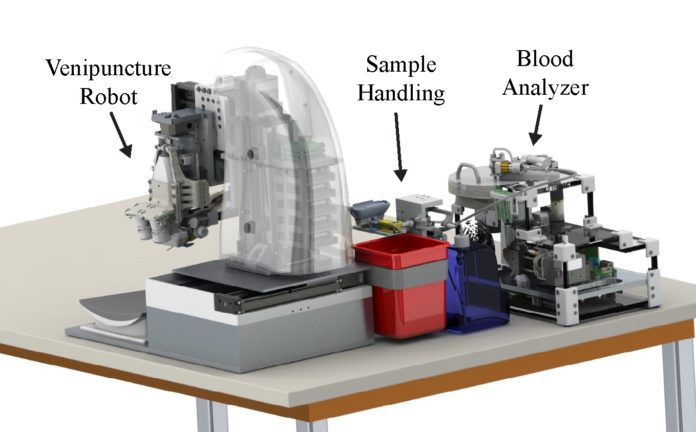Diagnostic blood testing is the most usually performed clinical method in the world, and it impacts the vast majority of the therapeutic choices made in hospitals and laboratories. But, the achievement rate of physically drawing blood samples relies upon clinicians’ skill and patient physiology, and about all test outcomes originate from centralized labs that handle huge quantities of tests and utilize labor-intensive analytical strategies.
So, a Rutgers biomedical engineering research team created a robotic device for automated blood drawing and testing that provides rapid results. The potential benefit of this device that it improves the workflow in hospitals and other health-related institutions to allow health care practitioners to spend more time treating patients.
Martin L. Yarmush, senior author of the study and Paul & Mary Monroe Endowed Chair & Distinguished Professor in the Department of Biomedical Engineering at Rutgers University-New Brunswick said, “This device represents the holy grail in blood testing technology. Integrating miniaturized robotic and microfluidic (lab-on-a-chip) systems, this technology combines the breadth and accuracy of traditional blood drawing and laboratory testing with the speed and convenience of point-of-care testing.”
The device includes an image-guided robot for drawing blood from veins, a sample-handling module, and a centrifuge-based blood analyzer. It offers highly precise results from a white blood cell test, using a blood-like fluid spiked with fluorescent microbeads. The testing used artificial arms with plastic tubes that served as blood vessels. The device could provide rapid test results at bedsides or in ambulances, emergency rooms, clinics and doctors’ offices.
Max Balter, who led the study and holds a doctorate in biomedical engineering from Rutgers said, “When designing the system, our focus was on creating a modular and expandable device. With our relatively simple chip design and analysis techniques, the device can be extended to incorporate a broader panel of tests in the future.”
A study describing the fully automated device is published online in the journal TECHNOLOGY.
